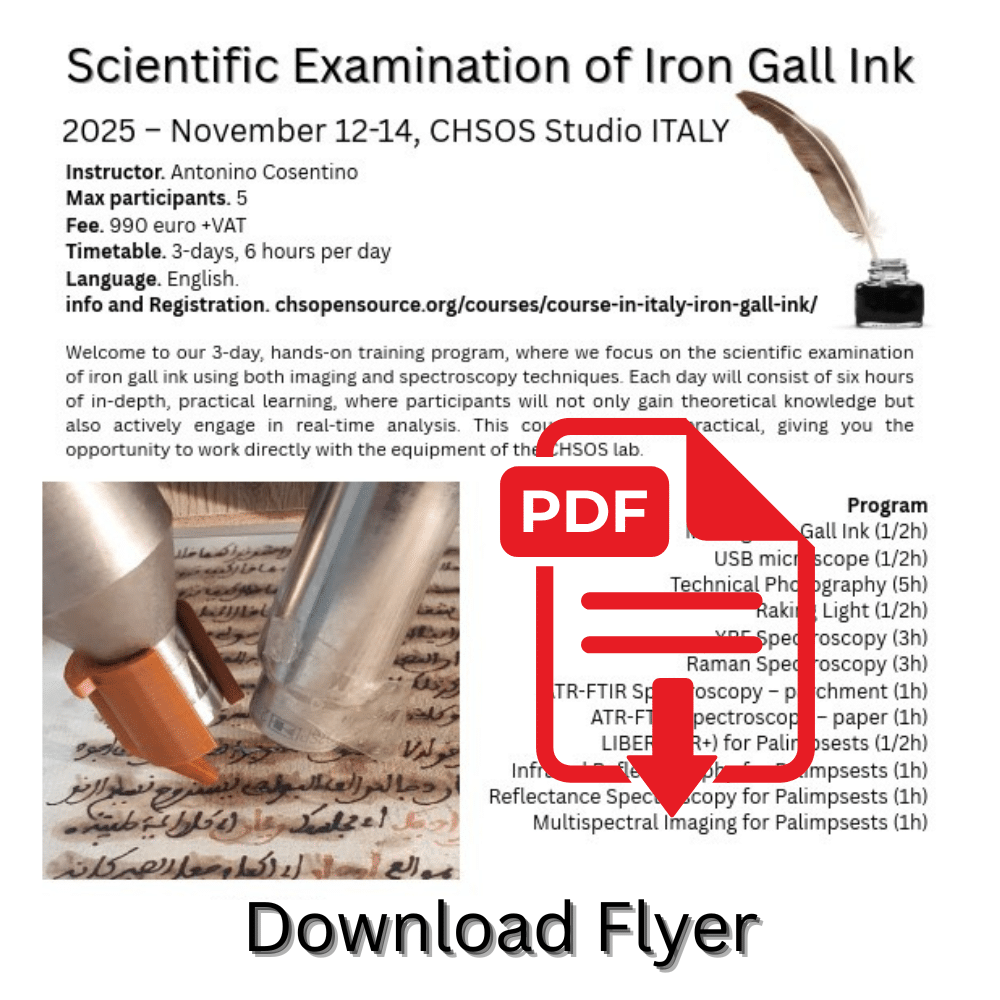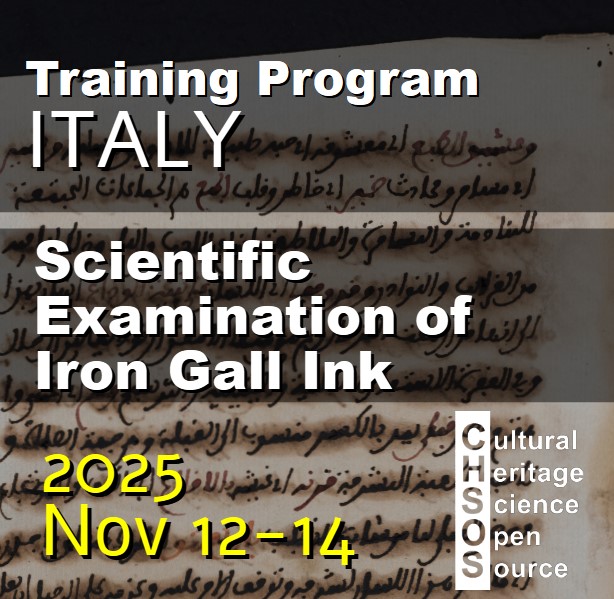CHSOS is collaborating with PixelTeq to evaluate a new filter-wheel based monochromatic camera tailored to the multispectral imaging examination of art. The mission of Cultural Heritage Science Open Source (CHSOS) is to promote, develop and evaluate low-cost technologies for art documentation and examination in order to benefit the largest community of medium and small museums and cultural institutions which notoriously run on limited budget. Imaging technologies are the main target of CHSOS mission because they provide the most of the information at the lower cost. The new multispectral system will be evaluated on the pigments checkers and on a collection of Sicilian art and historical documents.

This system is of interest for the cultural heritage sector because of its hardware simplicity (it is fully functional out of the box) and ease of use. It is also appreciated thanks to its relatively contained cost, lightweight and small dimensions. It could make multispectral imaging accessible to any user – speeding the imaging documentation process. It features a 5 Megapixel sequential 8-band filter-wheel based multispectral imager UV-VIS-NIR and delivers images of 8 spectral bands at full frame resolution using standard and custom interchangeable optical filters.
Marco Snikkers from PixelTeq brought the equipment on July the 3rd and we paid a visit to Master Domenico Di Mauro, one of the few last Sicilian cart painters; he is currently 101 years young. We visited his studio, he‘s still working, and we analyzed some 1920′ pieces of his collection of Sicilian carts. I, my friends and my family enjoyed spending time with Marco and becoming friends this is going to be a fruitful collaboration which could lead to the development of a system specifically engineered for art examination.























Hi Antonino
Looks very interesting.
Any comments and conclusions on the results of the images?
It would be interesting to see some samples.
Thanks.
Moshe
Hola Moshe,
As soon as I have something ready I’ll publish on the blog!
Interesting camera, Antonino! I’m looking forward to hearing more about the results.
Factors that in the past have made such cameras too expensive for most independent conservators and small institutions have been the monochrome sensor, an apochromatic lens to maintain focus and registration of the pixels across the full range of wavelengths, and availability of bandpass filters. If this camera can contain these costs, it could become a popular system for conservators. With only a 5 Mp sensor, are you stitching together mosaic images to achieve adequate resolution?
Hi Taylor, nice to hear from you and wish you a great 2015! Yes , I do stitching with these camera. I had it for test in my lab and I managed to gather some material for a couple of papers. I submitted them in August, but the publication process takes a bit. I’ll post when they are published so we are going to have something more detailed to talk about. 🙂 As you anticipated, nowadays a monochromatic CCD camera is definetely not expensive. as you anticipated the lens is a bit of a problem for the necessary refocusing. I could not afford a apochromatic lens, so I just did refocusing and registration